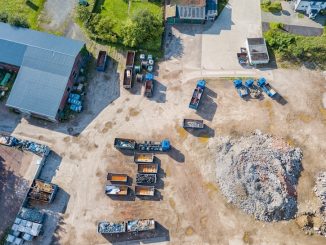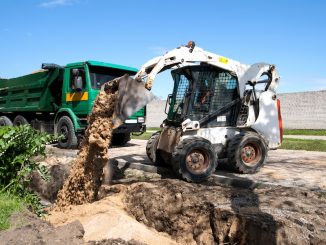View the complete article here.
You want to make a lot of money… and maybe do it quick. You’re willing to work hard and get your hands dirty. You don’t want to work for someone else. You can’t afford to spend too much money on startup costs, either.
In this guide, we’re going to show you how to accomplish this—with, what we believe—are the top 15 businesses to start right now, without requiring too much of an upfront investment.
We’re also going to show you what equipment or materials you need to get started, what services you can offer, how you can find your first few clients, and how to price jobs.
Some of these business ideas will require more experience than others. And, some will require more manual labor. It’s up to you to decide which one is best for you.
Our mission is simple—to show you which businesses will generate you the most amount of money, with the lowest startup costs, and as quick as possible.
Pressure Washing
One of the best things about pressure washing is its low startup costs. To get started, you really just need a pressure washer and a truck or van to transport your equipment. Once you get the hang of things, you’ll probably want to invest in some additional nozzles for the different type of jobs, as well as specialized cleaning solutions. Just remember to learn the correct techniques to ensure you aren’t causing damage to any specific types of surfaces.
When it comes to the types of services that you can offer—you might want to start with residential jobs like the exteriors of homes, driveways, decks, and patios. If you’re looking to do commercial jobs as well—you should consider offering services for parking lots, graffiti removal, and large structures.
When determining a pricing structure for pressure washing jobs, start by researching local competitors to get a sense of the average hourly rates in your area. For example, these hourly rates may range somewhere between $50 to $100 per hour—depending on the difficulty of the job, of course. For larger jobs, you may want to consider charging by square footage. The benefit of offering pricing by square footage is that it offers a clear pricing structure upfront, for both you and client. Charging by the square footage may also offer you an advantage… the faster you work, the more you earn per hour.
To find jobs for a new pressure washing business, we’ve heard of guys crushing it simply by driving around neighborhoods and looking for driveways that are in serious need of a good washing. And—once you’ve got the momentum going—you might want to consider partnering with real estate agencies, landscaping businesses, construction companies, and other type of project management companies.
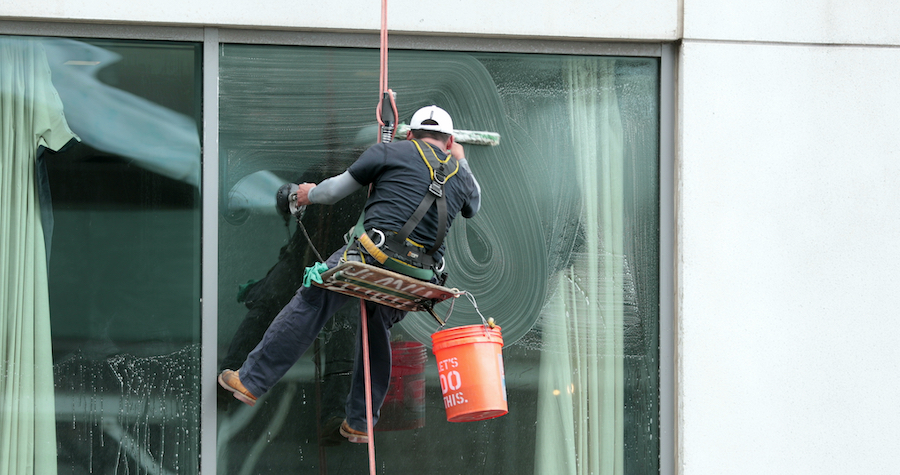
Window Cleaning
When you were a kid, you probably didn’t dream of becoming a window cleaner. But, don’t underestimate it… because you can make a ton of money offering window cleaning services if you know to scale your business properly.
Like pressure washing, you don’t need much money or equipment to get started with a window cleaning business. To begin, you typically just need a set of professional squeegees, a ladder, some cleaning products, and a reliable truck or van to carry your equipment. Also, you might want to consider purchasing some specialized tools like extension poles or water-fed pole systems to reach higher windows.
In the beginning—you probably want to start with smaller, residential gigs like windows for houses, sunrooms, and glass patio doors. When you feel that you and your business are ready, you can go after commercial jobs like storefronts and multi-story office buildings.
When it comes to pricing your window cleaning jobs—hourly rates can fluctuate—but a general rule-of-thumb is $40 to $75 per hour. On larger projects—you might want to consider charging per window, which should make quotes more accurate for both you and your customer.
Handing out flyers door-to-door is likely to land you, at least, your first few clients. And, like pressure washing, it’s probably a good idea to drive around local neighborhoods in search of houses with dirty windows. Maybe you can even get your foot in the door by offering a first-timers discount.
Junk Removal
When it comes to earning money with junk removal, the sky is the limit. Don’t believe us? Well, then just check out an interview we did recently with Casey Walsh—who grosses $7,000,000 per year with his junk removal business that he started from scratch.
Although Casey now has a fleet of trucks, you really just need a single truck to begin. After all, this is how Casey got started. In addition to the truck, you’ll also want to consider some heavy-duty gloves, a dolly for the heavy items, and—of course—more manpower to help you carry and load the junk… I’m talking about employees. Believe me, you’re not going to make it very far in the junk removal industry without a hard-working, reliable team at your side.
Regarding services, you’ll likely start out with residential jobs like garage clean-ups and old furniture removal. But, once you’re capable of investing in a larger truck or two—and you’ve got reliable employees—it might be time to go after commercial jobs like office disposals, construction site debris, or retail clean-outs. This is where the big bucks are made.
Pricing junk removal jobs mainly depends on the type and volume of the junk. The best junk removal businesses usually quote jobs based on how much space the junk occupies in a standard 20-yard dump truck, because charging by load rather than by hour tends to be more efficient. Keep in mind that pricing for junk removal jobs is probably more important than pricing for any other business on this list. Removing and transporting junk isn’t just time-consuming, but there are costly consequences if you don’t factor in additional costs like disposal fees, potential hazardous items, and potential permit fees.
Not sure how to get your first few clients? Handing out flyers door-to-door is still just as effective as it was in the pre-social media days. Also, once you’ve built up a decent portfolio, showing off those before-and-after photos on your website and social media is an excellent way to get the attention of potential clients.
Moving Company
A moving company is a bit like junk removal… If you’ve got a big enough truck, some strong bodies around, and you’re willing to work hard—you can make a lot of money.
To get started, you’ll want a couple of sturdy dollies, a hand truck, a variety of moving blankets and straps, and—of course—a reliable truck. The ideal truck for a moving company is typically a box truck—specifically between 14 to 26 feet long—which provides ample space for most residential and small commercial moves. These trucks are crucial, because of their large, enclosed cargo area—which can protect items being transported from weather, as well as their ability to easily load and unload due to the near-ground level access.
In the beginning, it’s recommended to target smaller, residential moving jobs—ranging from helping with relocating apartments to assisting homeowners transition to a new house. When you’re ready—ideally, having more than one truck at this point—you can venture into larger, commercial moves—handling everything from small office relocations to full-scale business moves.
When it comes to pricing a moving job, the most important factors include the time it will take, the number of employees, the weight of items, the distance of the move, as well as potential moving times. When it comes to local moves, the general rule of thumb is to charge by the hour—often with a minimum charge—which usually includes two employees. Of course, this rate may increase with each additional employee required or the addition of larger, heavier items like a piano. When it comes to long-distance moves, costs are typically calculated based on the weight of the items and the total distance that will be travelled. And, when it comes to peak times like holidays and the end-of-the-month, you should be able to charge more due to a higher demand.
When it comes to getting your first few jobs, of course, you can advertise your moving services on Craigslist and social media. But, if you want to go the extra mile, try networking with local real estate agents—who can put you in touch with homeowners during the sales process.
Gutter Cleaning
Think gutter cleaning is a mundane task for the neighborhood kid? Think again. This is another simple business idea that can generate millions—yes, millions—if you scale it properly.
To get started, you should only need a good-quality ladder, protective gloves, a specialized scoop for debris, and a truck or van to transport equipment and waste. When you’re ready to invest a little bit into your business, you might want to consider a high-pressure vacuum to complete your jobs quicker.
You’ll likely start out with residential homes, but—when you’re ready—consider entire apartment complexes and office buildings. Of course, these larger jobs will be a bit more intricate so—at this point—you’ll need an employee or two on staff, as well as that high-pressure vacuum that we mentioned before.
When it comes to pricing your jobs, a ballpark hourly rate sits between $50 and $100 per hour. On larger jobs, you might want to consider charging per linear foot of the gutters. This will provide a faster and more efficient quote.
Like pressure washing and window cleaning, handing out flyers to residential homes and businesses is a great way to find your first few clients. With gutter cleaning, you might also want to consider recording client testimonial videos and sharing them on your social media. This is a clever way to earn the trust of potential new clients—especially some of those larger, commercial businesses.
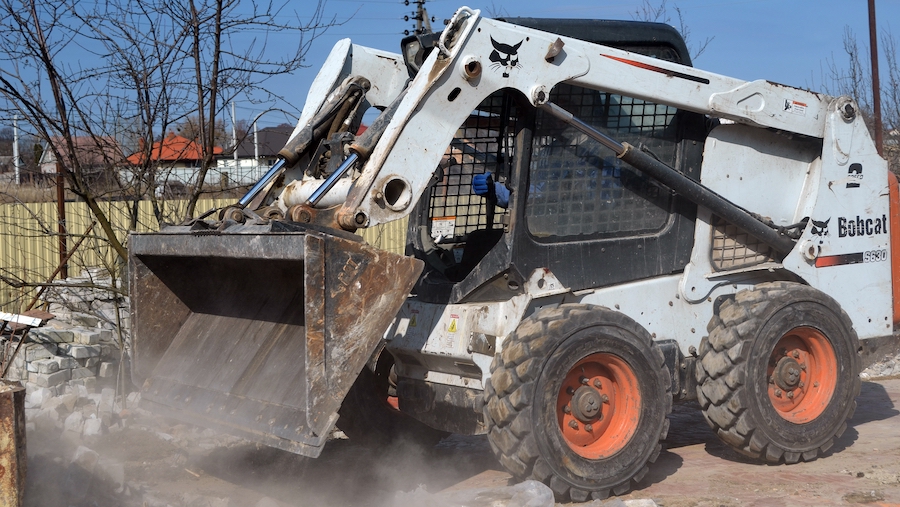
Demolition Services
If you’re not afraid of intense manual labor, and you’re willing to spend some money on some equipment, then a demo business might be right for you.
The type of demo jobs you target will largely depend on the type of equipment you have in your arsenal. For more smaller jobs like tearing down sheds, interior gutting, or removing wooden decks—you’ll likely need equipment like sledgehammers, pry bars, and small skid-steer loaders with the right attachments. Once you have the budget—and feel confident to tackle projects like demolishing houses, dismantling steel structures, or clearing large construction sites—you’ll need heavier machinery like bulldozers, wrecking balls, and high-reach excavators.
When it comes to pricing your demolition services, the size and material of the structure—as well as the job site’s location—are typically the most important considerations. The general rule-of-thumb is $4-$8 per square foot, but—of course—complexities like hazardous materials or difficult site conditions can impact the price as well. For larger, more substantial projects, adopting a flat-fee system can make the quoting process easier and help to maintain profit margins.
One of the best ways to find clients with your new demo business is to build relationships with local construction companies and real estate developers, both of which frequently require demo services. Once you’ve been in business for a decent amount of time, you might want to consider posting before-and-after photos on your website portfolio—which is likely to attract attention from potential clients.
Car Washing/Detailing
It’s important to know the differences between car “washing” and car “detailing”.
Car washing involves cleaning the exterior of the car—removing dirt and grime with soap, water, and sometimes wax for a shiny finish. On the other hand, car detailing is a more thorough process that involves deep cleaning both the interior and exterior of the vehicle—including polishing, waxing, vacuuming, stain removal, and sometimes even minor cosmetic touch-ups.
A simple car wash business can be started with basic cleaning supplies made for vehicles, a reliable water source, and a truck or van to transport your gear. You would likely charge $40-$75 per wash and might want to consider traveling to clients’ locations to do the work. To get your first few clients, handing out flyers around town is probably your best bet.
Once you’re ready to scale, this is where you make the big bucks with a car detailing business. At this point, you’ll need multiple employees and a well-located facility that can cater to a high-volume of clients—including commercial accounts and luxury car owners looking for top-tier detailing services. Prices may range between $100-$250 per vehicle, and you should consider implementing package deals or membership programs—encouraging customer loyalty and regular income. When it comes to getting new clients, Yelp is your best friend for a full-service car detailing business—getting frequent, positive reviews will be crucial.
Tree Removal
Tree removal has to be one of the most underrated businesses out there. If you’ve got skills with a chainsaw and don’t mind getting your hands dirty, you can make a ton of money with a tree removal business. For example, we have a friend who made millions in a single year removing trees and other debris after a hurricane.
So what does “tree removal” entail exactly? With a tree removal business, you’ll be offering services that include cutting down, trimming, pruning, or completely removing trees, shrubs, and stumps from residential and commercial properties.
Initially—you’ll just need a reliable chainsaw, safety gear, a ladder for high branches, and a truck for hauling timber and debris. Once you begin scaling to more frequent and heavy-duty jobs, you might want to consider specialized equipment like a stump grinder and wood chipper.
Of course, you’ll want to start with smaller, residential jobs like removing dead trees from yards—but, once you’re comfortable and have the right gear, you can tackle larger commercial projects like clearing entire plots of land for construction.
Pricing tree removal services can vary, with rates ranging between $150 to $1,500 per tree—determined by factors like the tree’s size, location, and complexity of the job. On bigger projects, charging a flat rate per job is ideal.
What’s the best way to find your first few clients? Why not drive around neighborhoods and look for dead trees and simply ask the owner? You’d be surprised how home owners have been tired of staring at dead a dead tree and have been too lazy to have it removed. Once you’ve scaled your tree removal business to a larger size, definitely consider posting before-and-after photos to social media. It’s likely that you’ll attract clients who didn’t even realize they needed trees removed.
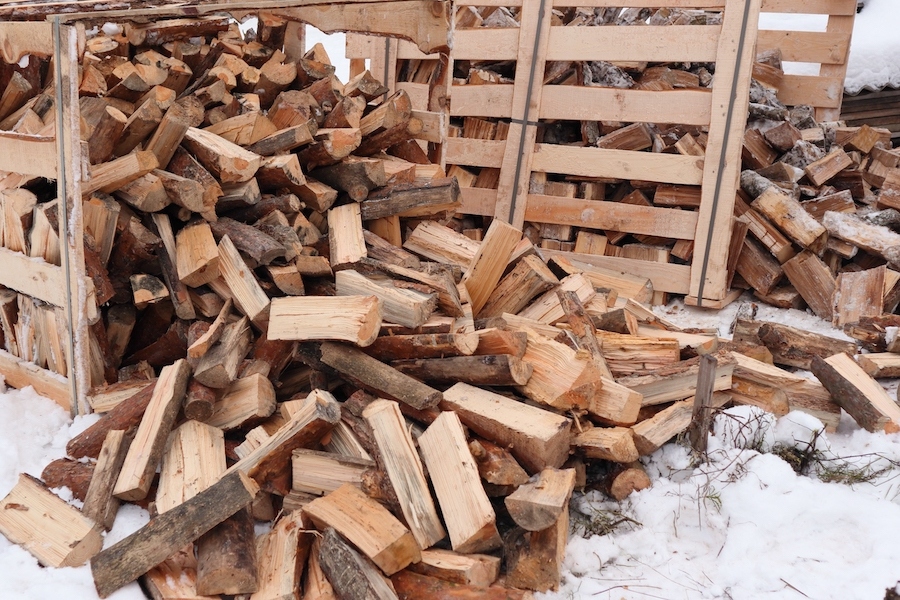
Firewood Delivery
Speaking of timber—for those of you who have access to a reliable source of wood, then a firewood delivery business might be for you.
Consider how efficient your business would be if you offered both tree removal services and firewood delivery. But, for those of you who are just interested in firewood delivery, you will need a source of wood. In this case, you should connect with regional logging companies for leftover wood or wood they simply don’t want—or maybe you want to purchase wood from wholesalers or larger forestry operations.
Adding a markup to your cost is where you’ll make your money. In other words—you’ll buy or obtain the wood at a certain price, process it into marketable firewood, and sell it at a higher price to your customers. And, be sure to research local market rates to ensure your pricing is competitive yet profitable. Generally—you can charge by the cord, which is a stack of wood that measures 4 feet high by 4 feet wide by 8 feet long.
When it comes to equipment—you’ll likely need a chainsaw, a wood splitter, safety gear, and a truck with a large bed for transporting the wood. When you can afford it, you might want to consider more specialized equipment like a hydraulic log splitter or wood processor to get work done faster.
Of course, finding new clients for a firewood delivery business is ideal during the winter months when the demand for firewood spikes. To get your first few clients, handing out flyers around town should do the trick, but—when you have the budget—consider printing some high-quality door hanger advertisements to put on door handles in the homes in your area.
Cleaning Business
If you can find hard-working employees and manage them well, you can make serious money with a business that cleans residential or commercial properties.
One of the best parts about a cleaning business is the low startup costs. To get started, you really just need cleaning supplies, a vacuum cleaner, mop, bucket, and a reliable van to transport your employees and equipment. And—when you have the budget—consider additional, specialized tools like steam cleaners or carpet shampooers.
When it comes to getting your first few clients, handing out flyers around town is a great way to get started. But, the key to scaling your business to a large size is word-of-mouth. It’s only a matter-of-time before a satisfied client recommends you to a friend… and another friend… and another friend. But, none of this is achievable without a solid team working by your side. Quality control is essential with a cleaning business—if your employees start cutting corners, you will inevitably lose business.
Scaling a successful cleaning business also requires accurate job pricing. For residential cleaning, charging by the hour is common—typically ranging from $25 to $50 per hour. For larger commercial properties, a per square foot pricing model is sometimes more efficient—which may range from $0.12 to $0.18 per square foot.
Lawn Care/Landscaping
It’s important to know the differences between “lawn care” and “landscaping”.
Although they are used sometimes interchangeably, lawn care and landscaping are different aspects of outdoor property maintenance. Lawn care is primarily focused on the health and aesthetics of the grass itself—including tasks like mowing, fertilization, aeration, and weed control. Landscaping—on the other hand—involves designing, constructing, and maintaining the overall aesthetic of outdoor spaces—which can include elements like trees, shrubs, flowers, and hardscapes like patios or walkways.
The equipment you’ll need for your lawn care and landscaping business will depend on your budget, of course. Ideally—for lawn care—you’ll have a commercial-grade lawn mower, trimmer, edger, and a blower. Landscaping tasks will require additional tools such as shovels, pruning shears, and potentially more specialized equipment like chainsaws for tree trimming and tillers for garden preparation. When it comes to large-scale projects, you’ll likely have a skid steer or excavator—as well as a robust truck and trailer to transport the equipment.
For general lawn care—like mowing, weeding, and edging—a common approach is to charge an hourly rate, which can range from $30 to $60 per hour—depending on your local market. For landscaping tasks that are labor-intensive or require a high level of expertise, you might want to consider charging an hourly rate of $60 to $100. That being said, some lawn care and landscaping businesses prefer to charge with a per square foot model—especially for larger projects where you may want to charge anywhere between $0.08 to $0.20 per square foot.
Like firewood delivery, printing door hanger advertisements for your lawn care and landscaping services is a great way to get your first few clients. And, once you get the ball rolling, getting positive Yelp and Google reviews from your current clients is essential to scaling to a large-scale business.
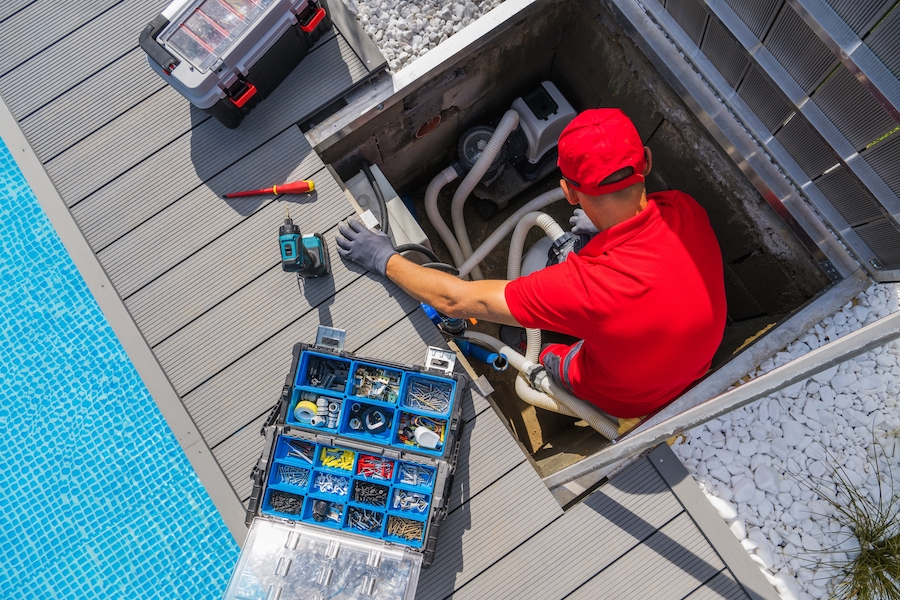
Pool Cleaning/Maintenance
To get started with a pool cleaning and maintenance business, you really just need the basic pool cleaning tools—including nets, brushes, vacuums, the appropriate pool-cleaning chemicals, and a truck to transport everything. As you scale your business, you might want to consider additional items such as electronic water testing devices and a truck trailer to carry more equipment.
It’s likely that you’ll start with smaller, residential projects. But—once you’ve got the confidence—you can aim for larger, higher-paying gigs like cleaning and maintaining pools for hotels, school, and other types of commercial properties.
The national average hourly rate for pool cleaners is $100 per hour, although this can vary from $50 to $375 depending on the duration of the job. The size and type of the pool also significantly affects costs, with larger and more complex pool types like saltwater pools requiring additional work and specialized knowledge. Regarding maintenance, chemical balancing and shock treatments can cost around $20 to $50, while comprehensive monthly packages offering a broad range of services can range anywhere from $80 to $200 per month. Of course, the specific types of maintenance—such as water testing, skimming, vacuuming, and equipment checks—will influence the pricing.

Pest Control
Although most people tend to overlook pest control, usually assuming it’s just a niche service that won’t take you very far, they are wrong—very wrong. The demand for pest-free homes and commercial buildings lasts all year, and people are always willing to pay for this crucial service.
To get started, you just need a few fundamental items like chemicals, sprayers, safety gear, and—of course—a truck or van to transport your equipment. Once you have the budget and are committed to your business, you might want to consider investing in advanced tools and tech like specialized treatments for particular pests or even thermal imaging to detect pests hidden in areas.
You’ll probably start with residential projects like homes plagued with termites, cockroaches, or rodents. But—once you’re properly equipped—commercial spaces like restaurants, hotels, and offices should be your next venture.
When pricing pest control jobs, the general rule-of-thumb is $50-$120 per hour. For larger contracts and spaces, it might be a good idea to charge by the square foot or even introduce tailored package deals. Also, you should strongly consider upselling—offering preventative treatments or routine maintenance can provide added value to your clients and increase your revenue.
Similar to lawn care and landscaping, handing out flyers around town is a great way to land your first few clients, and—when you have the budget—consider printing some high-quality door hanger advertisements to put on door handles in the homes in your area.
Fencing
You don’t need to be a master carpenter to operate a successful fencing business. If you’ve got a hammer and are willing to learn and work hard, then you’ve got what it takes.
In addition to a hammer, you’ll also likely need a nail gun, a reliable truck—of course—and maybe a post hole digger to complete jobs a bit faster. When you’re ready, you might want to also consider some more specialized equipment like automatic gate installers and laser-guided post setters to make your operation even more efficient.
When you’re starting out, consider residential projects like privacy fences and garden enclosures. If you’re looking for more revenue, you should consider larger commercial projects like security fencing for businesses or barriers for public spaces.
When determining pricing for your fencing services, between $60 to $90 per hour is the general rule-of-thumb. However, more significant—usually commercial—jobs typically charge by the linear foot—usually ranging from $30 to $60 per linear foot. Of course, the price will also depend on material and labor costs as well.
To get your first few clients, consider getting in contact with local garden centers and home improvement stores. Explain that you offer high-quality fencing services and ask to place a flyer near their checkout counter.

Painting
And, last—but certainly not least—there is painting. If you are a stickler for detail and know how to manage a team of employees, then there’s no reason why you can’t create a successful painting business.
To get started—you’ll need the basic painting supplies like brushes, rollers, drop cloths, and—of course—paint. Once you begin mastering your craft, you should invest in spray systems and high-quality tools to increase the speed of your projects.
You’ll likely get started with smaller, residential projects like bedrooms, living rooms, or exteriors of homes. But—once you’ve built a solid portfolio—tackling larger, more lucrative ventures like commercial spaces and entire apartment complexes is where you’ll make the big bucks.
When it comes to pricing painting jobs, the type of property plays a pivotal role. For residential projects, tasks are typically priced by room size or square footage—often ranging from $3 to $6 per square foot. Of course—the paint quality and room complexity will also play a role. Commercial projects—being more extensive—might offer a discounted rate of $2 to $4 per square foot. Of course, the cost will be higher due to the larger area. Whether you’re pricing residential or commercial—always remember to include additional expenses for materials, labor, preparation tasks, as well as any unexpected complexities in your final quote.
To get your first few clients, what better way than to drive around neighborhoods—looking for houses in need of a paint job—and pitching your services. Once you’ve built your portfolio, definitely consider posting before-and-after photos on your social media—which is sure to draw attention from potential clients.
Crucial Closing Notes
If you’ve read this entire guide, it’s great that you’ve armed yourself with knowledge. You’re already ahead of most of your competition out there… But, none of this knowledge means anything without the skills and tools. If you want to own a business that generates millions per year—it’s essential that you know how market your services, manage employees, properly budget your income, and more. To learn all of these skills in one place, we recommend the Heavy Ape courses. At the moment, they’re offering two courses for the price of one. ‘Win More Bids and Earn More Profit from Projects’ and ‘Build a $1,000,000+ Construction/Trade Business.’
View the complete article here.
What are the common startup costs for a blue-collar business?
Blue-collar businesses typically have low startup costs, with essential equipment like pressure washers, ladders, or basic tools, depending on the specific business.
How can I find clients for my blue-collar business?
Effective client acquisition methods include driving around neighborhoods, partnering with related businesses, and utilizing traditional methods like handing out flyers door-to-door.











































